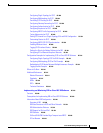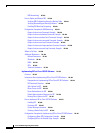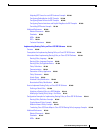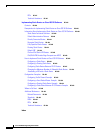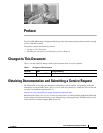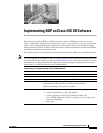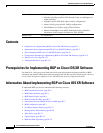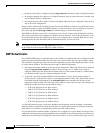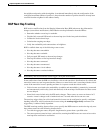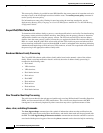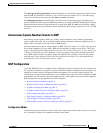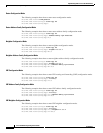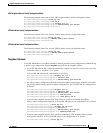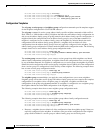
Implementing BGP on Cisco IOS XR Software
Information About Implementing BGP on Cisco IOS XR Software
RC-3
Cisco IOS XR Routing Configuration Guide
OL-14356-01
• Administrative Distance, page RC-30
• Administrative Distance, page RC-30
• Multiprotocol BGP, page RC-32
• Route Dampening, page RC-33
• BGP Routing Domain Confederation, page RC-34
• BGP Route Reflectors, page RC-34
• Default Address Family for show Commands, page RC-37
• Distributed BGP, page RC-37
• MPLS VPN Carrier Supporting Carrier, page RC-38
• BGP Keychains, page RC-39
• IPv6/IPv6 VPN Provider Edge Transport over MPLS, page RC-39
• VPNv4/VPNv6 over the IP Core Using L2TPv3 Tunnels, page RC-40
BGP Functional Overview
BGP uses TCP as its transport protocol. Two BGP routers form a TCP connection between one another
(peer routers) and exchange messages to open and confirm the connection parameters.
BGP routers exchange network reachability information. This information is mainly an indication of the
full paths (BGP autonomous system numbers) that a route should take to reach the destination network.
This information helps construct a graph that shows which autonomous systems are loop free and where
routing policies can be applied to enforce restrictions on routing behavior.
Any two routers forming a TCP connection to exchange BGP routing information are called peers or
neighbors. BGP peers initially exchange their full BGP routing tables. After this exchange, incremental
updates are sent as the routing table changes. BGP keeps a version number of the BGP table, which is
the same for all of its BGP peers. The version number changes whenever BGP updates the table due to
routing information changes. Keepalive packets are sent to ensure that the connection is alive between
the BGP peers and notification packets are sent in response to error or special conditions.
Note For information on configuring BGP to distribute Multiprotocol Label Switching (MPLS) Layer 3
virtual private network (VPN) information, see Cisco IOS XR Multiprotocol Label Switching
Configuration Guide.
Note For information on BGP support for Bidirectional Forwarding Detection (BFD), see Cisco IOS XR
Interface and Hardware Configuration Guide and Cisco IOS XR Interface and Hardware Command
Reference.
BGP Router Identifier
For BGP sessions between neighbors to be established, BGP must be assigned a router ID. The router
ID is sent to BGP peers in the OPEN message when a BGP session is established.
BGP attempts to obtain a router ID in the following ways (in order of preference):



